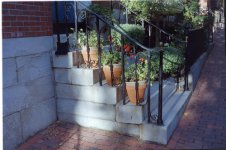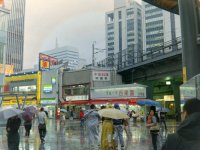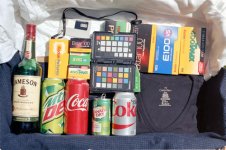Exactly. I've used Saturation AIMRGBpro +100.cha except Ektar that was +50 only because saturates quicker.
Jack, can you explain the Channel Mixer presets you have shared. There are 200 items, ranging from -100 to +100. It appears to me that these are presets to add/remove different degrees of saturation. Like PS or LR's saturation adjustment, but with slightly different effect.
Are these general, that is, a better way to add/remove saturation for all images?
Or, are these specific to film? That is, purpose-built for adjusting saturation in film scans?
Also, FWIW, I can match your result for the "steps" image, and it's very good, but only with a linear tiff produced by dcraw.
- Make a linear tiff with dcraw -v -w -H 0 -o 0 -q 3 -4 -T fileName
- Open in Photoshop
- Curves... use your c-log-rev-inv.amp file (result looks awful, bluish haze)
- Channel Mixer with preset AIMRGBpro +100.cha (more sat, but still awful)
- Make an "Auto" adjustment (result looks very good)
When I do the same with a linear tiff from MakeTiff, highlights are blown and color-cast.





![171004-TestBox-Fuji200-SonyNoFilter-DSC9558-rawNeg-Scr[1]xx.jpg](/data/attachments/60/60157-84b2987d0de27a63deae5ae093b8f2d0.jpg?hash=hLKYfQ3iem)